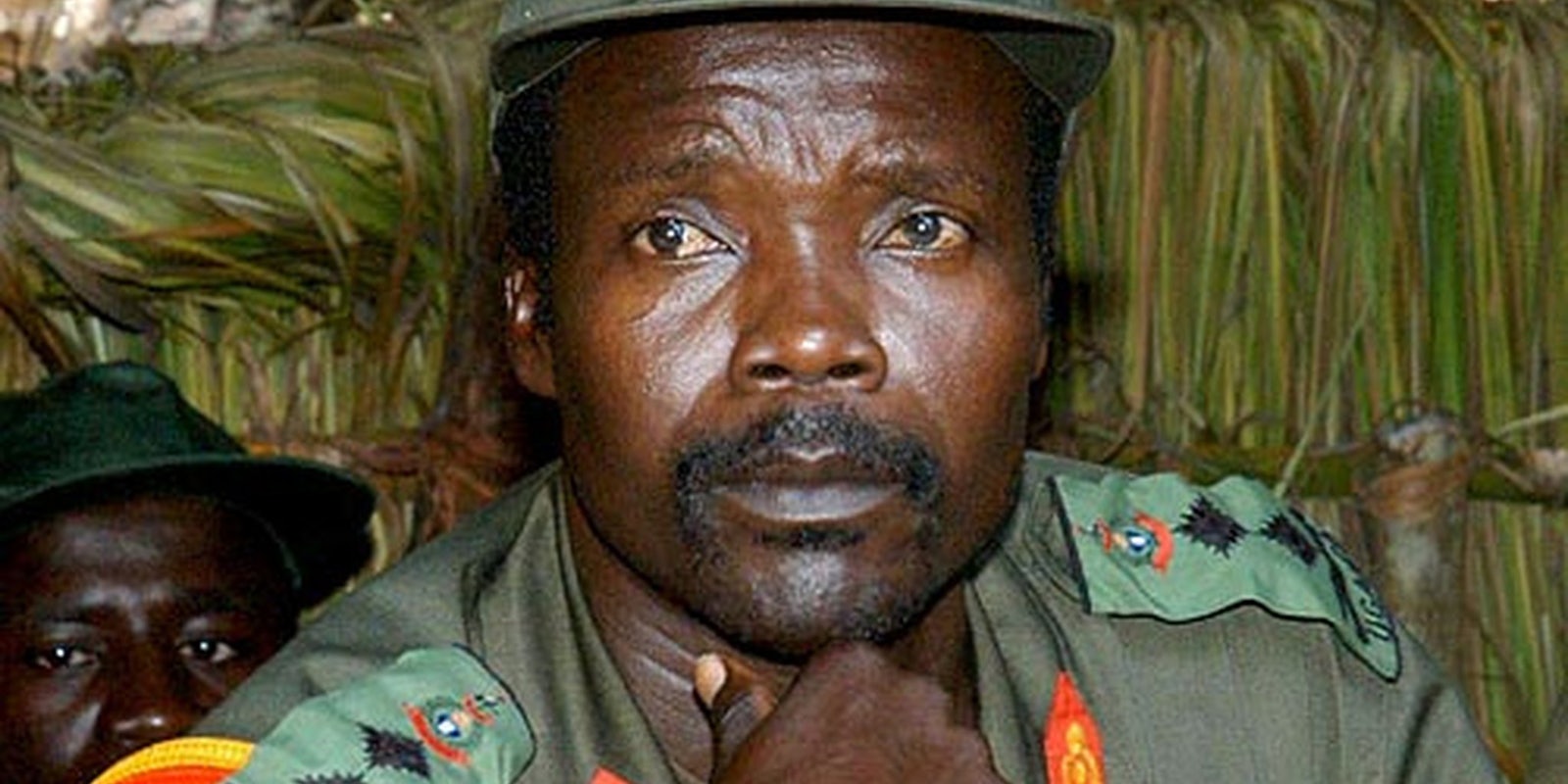Nothing is more powerful than an idea whose time has come, and it looks like the time has come for Joseph Kony, the charismatic head of the Lord’s Resistance Army, a rebel force of African children his supporters have kidnapped, brutalized, brainwashed, and enslaved.
After nearly thirty years terrorizing villages across Central Africa, first in Uganda and now in the Democratic Republic of Congo, Central African Republic, and South Sudan, what could possibly bring down the seemingly-invincible rebel chief?
Fame. And what brings fame to those who would prefer not to seek it out? Social media.
The nonprofit group Invisible Children has released a documentary, “Kony 2012,” with the stated aim “Make Kony Famous.” They have, to a truly remarkable degree, succeeded. Last night the video exploded across multiple Web communities:
-
Vimeo: 5.2 million views, 8697 Likes, 450 Comments
-
YouTube: 1,845,000 views, 344,890 likes, 6,122 dislikes, 99,000 comments
-
Facebook: a reported 55,000 separate events, pages, groups, and 134,602 Likes
-
Pledge: over 76,000 have taken the pledge to “Make Kony Famous”
-
App: 3000 monthly users of the Facebook app
-
Reddit: 702 individual threads in the last 24 hours, some with hundreds of comments
-
Twitter: in the past 48 hours, mentions of “Kony” have gone from 149 to over 1,000,000
Which brings us to the nay-sayers.
Some are already accusing the movement of slacktivism—the self-deluding idea that by merely sharing, liking, or retweeting something you are actively changing the world. On Twitter, others have raised the spectre of racism and White Imperialism.
At social news Reddit, meanwhile, Invisible Children has come under fire for spending too much on film-making and not on food or other aid, as well as for actively advocating a military solution for taking down Kony. (Of course, as others pointed out, the charity’s overhead costs are hardly unusual.)
They note that Kony has already left Uganda, and his recruitment is reportedly down by 80 percent.
But you can’t play a numbers game with an ongoing atrocity. Let’s look at what “recruitment” means in this situation.
Indicted for war crimes by the Hague in 2005, Kony simply vanished into the countryside. He and his army have since left Uganda but continued their bloody work, raiding villages, killing parents, and taking their children for indoctrination into his evangelical warrior cult.
Here is a small sampling of his style, from the late Christopher Hitchens in his Vanity Fair article, Childhood’s End:
“I am sitting in a rehab center, talking to young James, who is 11 and looks about 9. When he actually was nine and sleeping at home with his four brothers, the L.R.A. stormed his village and took the boys away. They were roped at the waist and menaced with bayonets to persuade them to confess what they could not know—the whereabouts of the Ugandan Army’s soldiers. On the subsequent forced march, James underwent the twin forms of initiation practiced by the L.R.A. He was first savagely flogged with a wire lash and then made to take part in the murder of those children who had become too exhausted to walk any farther. ‘First we had to watch,’ he says. ‘Then we had to join in the beatings until they died.’”
It’s easy to jump on the Kony 2012 bandwagon. Who doesn’t want to protect children, after all? It’s just as easy to jump on the growing backlash, as the video becomes ubiquitous online and disrupts our normal, comfortable Web surfing routine.
We’d rather be on the side of the kids.
Image via Chris Schultz


